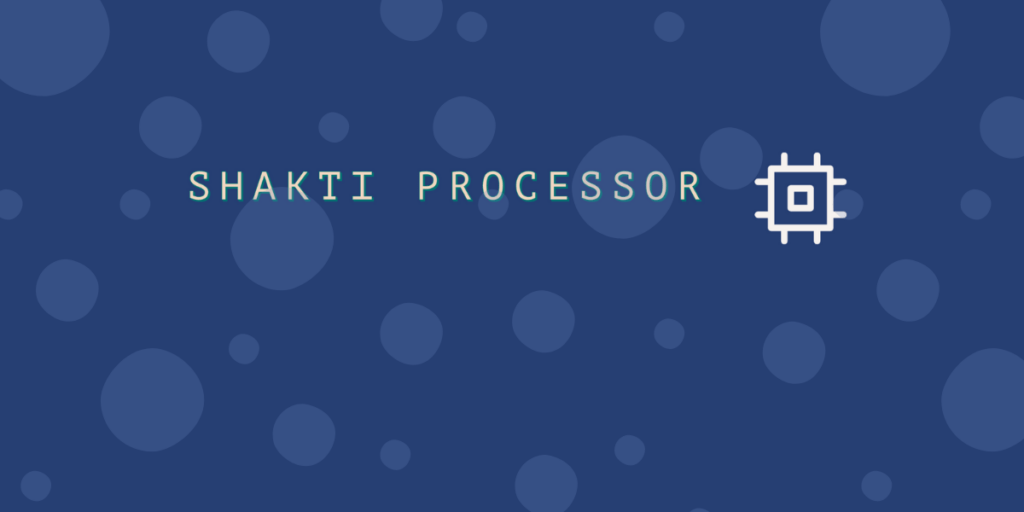Hello! When you hear SHAKTI is India’s First indigenous processor. A lot of questions might pop out in your head. What is SHAKTI Processor? Why is it special? How good is SHAKTI? Can it compete with INTEL, Arm, snapdragon, AMD or even raspberry pi’s for that matter? Most of these questions are answered in this article.
SHAKTI is a processor development program, aimed at developing a class of processors. Currently, the embedded and Desktop class of processor is developed. A Out of Order is on the way. Check out the source code.
SHAKTI Processor uses RISC-V [Reduced Instruction Set Computing-V(Five)] instruction sets. In a way, Intel processors use Intel’s X86 architecture ISA and ARM uses ARM architecture ISA.
Why a new ISA?
Group of researchers from University of Berkeley wanted an ISA for their project. Surprisingly they found literally none of them were catering to their needs.
Let us understand why! If you take Intel’s X86, it has almost 5000 instructions even without extensions. Even ARM has around 600 instructions. Also the architectures created during the early times were not future proof, rendering it difficult for current times. Also the royalty issues are problematic, even for educational purposes. So RISC-V started as a serious attempt at overcoming many of these issues.
RISC-V instructions are open-sourced, less complicated, usable for industry and academic projects. The ISA comes without royalties.
Is RISC-V, the first open-sourced architecture?
No! There were open architectures even before RISC-V like Sun Micro-systems SPARC V8. It didn’t have much impact for various reasons.
Why is SHAKTI having so much impact?
RISC-V is a fifth generation architecture, created specifically to rectify the mistakes and the failures of the past four generations. It is also designed from both software and hardware perspective. Though the main reason is because it’s open source. In an era of cyber threats, the modern governments are tired of the back-doors in their products that sneakily steal the data. When it’s an Open-source environment, we can verify the cleanliness of the implementation. The level of scrutiny is much higher, thus the impact.
Why use SHAKTI RISC-V Processor?
Cost-efficiency:
The obvious advantage would be its cost! The processor design is completely free and open-sourced. Thus the licensing cost is avoided. In contrast, all the most widely adopted processors are payable. The designs are proprietary. With SHAKTI, there is no royalty. The processor design is used here is BSD 3 Clause licensed.
Open-Source and Easy Solutions:
When it is an open-source processor, Clean implementation is not the only advantage. It has a community of people working on it and experimenting on it. Whenever there is a problem you can reach out to them instead of waiting for your processor company to solve the issue.
Fewer Instructions:
The total number of instructions is less than 200 meaning the instruction card will fit right in your pocket. In contrast to those bulky manuals of other processor. Fewer instructions also mean, we can create simpler architectures leading to cost-effectiveness and power-efficiency in processor implementation.
Frozen architecture, Portable software:
SHAKTI has Frozen architecture. A frozen ISA means we can develop the software once and run it indefinitely on any RISC-V device. There is no need to rewrite the software code for every design. Designers can modify, adapt, and migrate their design to the best platform for their product. This translates to preserved investments with the portable software. When you have a product that must be supported for decades, this can be very critical.
Scalability:
SHAKTI Processor is highly scalable i.e. it can run on low powered 32 bit embedded systems to 64 bit Out of Order cores. The design gives hooks to parameterize lots of processor design components.
Conclusion:
While the well established Intel x86 and ARM architectures are unlikely to vanish in the near future, SHAKTI is up for rapid growth given the flexibility and the long life it has. With a lot of big names like Google, Qualcomm, NVIDIA, Alibaba heavily investing and rallying behind the RISC V. This might bring a revolution similar to what Linux caused in Operating systems and push the boundaries of innovation in processor technology.
Akshaya currently works at the RISE labs. Her favorite subjects are Web designing and Microprocessors. She loves learning about new things and writing about them!

I am a Mechanical Design Engineer. I want diversify my skill and want to learn how i can use shakti microcontroller and microprocessors for learning and implementing in the field of design of robots and automation projects.
Please use contact us form in shakti.org.in and add your query
can this be integrated with arduino.? . that will be a turn around..
Hi nileh,
Please check out our new article on Shakti on Arduino IDE.
It is very good opportunity to the students… Thank you so much
Hey vinit,
Explore all the other articles too. Keep reading!!